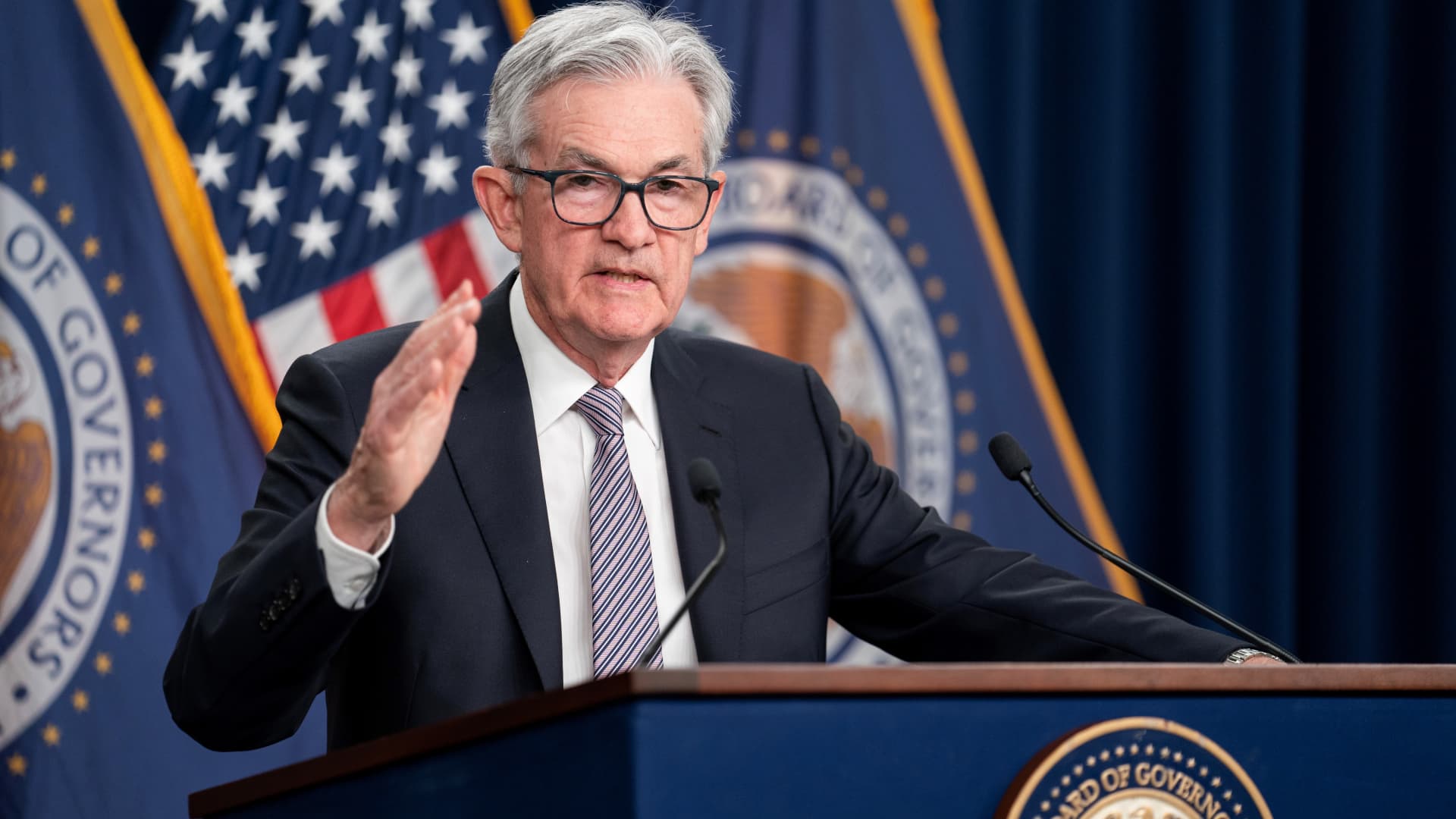Federal Reserve officials could talk tough enough at their June meeting that it would amount to a de facto interest rate hike. Markets are assigning a low probability that policymakers approve what would be the 11th consecutive rate increase since March 2022. But the rate-setting Federal Open Market Committee still could telegraph that policy is likely to stay tight well into the future, despite the market pricing that the Fed will cut by at least half a percentage point before the end of 2023, according to an analysis from Evercore ISI. “Expect ongoing pushback on early rate cuts and efforts to underscore the possibility of more hiking: this may serve as a substitute for a June hike,” Krishna Guha, the firm’s head of global policy and central bank strategy, said in a note. “Indeed, the deal in June may involve an explicit tightening bias in return for a pause.” Traders in the fed funds futures are assigning a roughly 1-in-4 probability that the FOMC increases its benchmark rate by another 25 basis points following the June 13-14 meeting, according to the CME Group’s FedWatch tracker. The fed funds rate currently is targeted in a range of 5%-5.25% after it was near zero prior to the beginning of the hiking cycle. Multiple officials have spoken publicly in recent days, with most taking a cautionary tone about the path ahead while universally noting that inflation is still too high. In separate CNBC interviews Monday , Atlanta Fed President Raphael Bostic said he’d be more inclined to raise rates than cut at this point, while Chicago’s Austan Goolsbee said it’s too early to determine what the next move might be. Conversely, Cleveland President Loretta Mester tilted hawkish, saying she’s not convinced the Fed has gone far enough in its fight to bring down inflation. Chairman Jerome Powell will be speaking Friday at the Fed-sponsored “Perspectives on Monetary Policy” forum in Washington, D.C. How a ‘substitute’ hike could happen Totaling up the multiple Fed speeches in recent days, Guha concluded that “we see little clear evidence of an effort to gear up to hike again in June.” “All Fed officials are being careful not to exclude a June hike with more data to come and we would not completely exclude this either,” he added. However, he expects officials to take in data over the summer “and make a call in September as to whether it has done enough but needs to go on extended hold, needs to nudge rates up further, or should soften its opposition to a possible December rate cut (our base case).” A “substitute” hike could see the rhetoric out of the June meeting reasserting the Fed’s stern commitment to fighting inflation and disinclination toward easing anytime soon. Members will get to express their outlook for rates through the quarterly “dot plot” update of what they expect this year through 2025, and for the long-range horizon. As recently as a week ago, markets had been pricing in nearly an 80% chance of a September cut. But some taming in the inflation data , stronger economic signals and repeated statements from central bankers that cuts are not in their forecast have caused a shift. The first cut is not expected now until November, with a 67% chance of another to follow in December, the CME Group data shows. Fed fund futures contracts are implying a 4.585% funds rate by the end of the year, from the current 5.08%. Guha said the “general tenor” of Fed commentary will be “pause-y” that will keep policy options open. “Given lags and noise in the data, as well as elevated risk of shocks from the debt ceiling crisis, September seems to be the right decision horizon absent a very strong upside surprise in the data in-between, though no-one should expect the Fed to say it is on pause until then,” he said.


